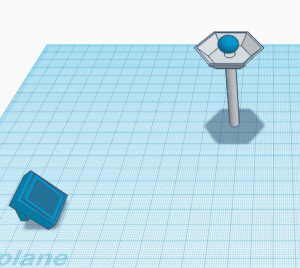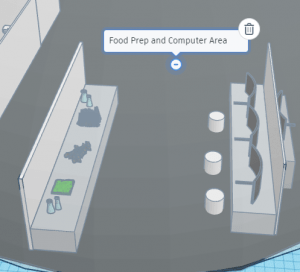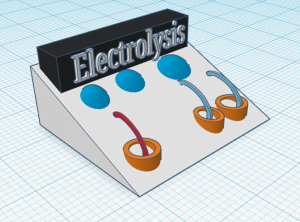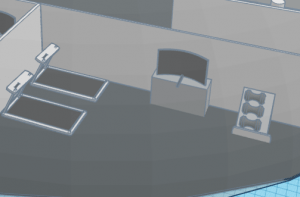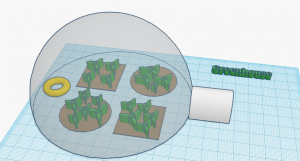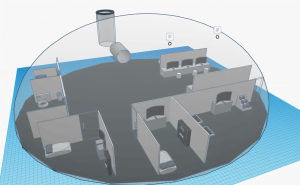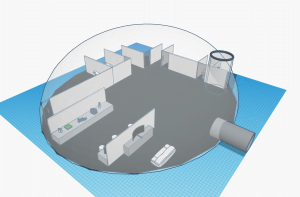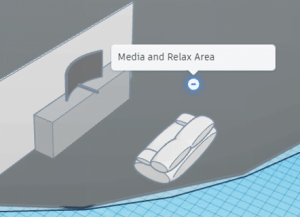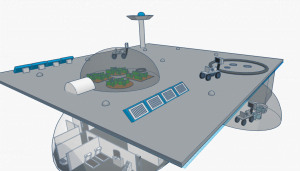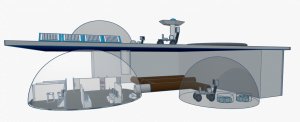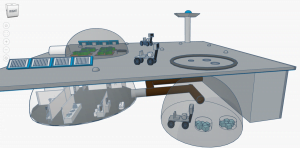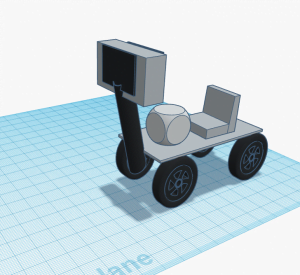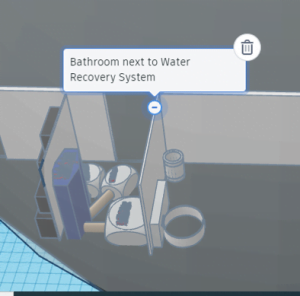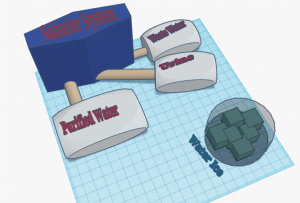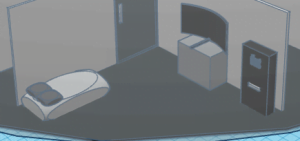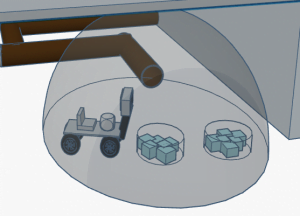Moon Camp Explorers Gallery 2020-2021
In Moon Camp Explorers each team’s mission is to 3D design a complete Moon Camp using Tinkercad. They also have to explain how they will use local resources, protect astronauts from the dangerous of space and describe the living and working facilities.
Team: Celestial Moon
John A. Sutter Middle School Winnetka United States 13, 14
External link for 3d
|
Project description
The main goals of our design is to provide safety and protection for the astronauts and their research, and an easy way for them and the rovers to travel about the moon. Our moon camp design will have tunnels leading from our above ground moon camp near the Philolaus crater to the lava tubes around the equator. The tunnels will be just like subways and the lava tube skylights will be the stations. These tunnels make it easier for both astronauts and rovers to travel far with less risk. Our Moon Camp will be near the Philolaus crater which will most likely contain ice water that we will extract for drinking, energy and oxygen. Extracting water from this location will be easier than from the poles. There is more sunlight near the Philolaus crater. Digging water at the poles would be harder because there is no sunlight and the ice water at the poles is mixed in the regolith. . |
|||
|
Where do you want to build your Moon Camp?
Close to the Lunar Poles Why did you choose this location?
The moon camp will be located in the North Pole near the Philolaus crater found by NASA’s Lunar Reconnaissance Orbiter. There’s lots of “Moon Ice” that can be melted and filtered. The climate on the Poles is better. It’s not as cold or as hot. The North Pole is also a good location for the astronauts to do research. There are lots of craters that contain ice and the lava tube Philolaus to explore. There could be the possibility of something living down in the craters. How do you plan to build your Moon Camp? Which materials would you use?
Our moon base will have two floors. The underground floor will protect astronauts from cosmic radiation, and the above ground structure will provide sunlight for plants The above ground inflatable structure is made of Kevlar and Mylar and has an airlock attached. It will be covered by a 20 cm layer of 3D printed regolith to protect from micrometeoroids and cosmic radiation. The underground layer will have 3D printed walls for comfort. Inside the underground moon base, our rovers will dig tunnels going to lava tubes around the equator and, to the Philolaus crater where may extract ice water Explain how your Moon Camp will provide the astronauts with:
|
|||
|
Water
|
Food
|
Electricity
|
Air
|
|
We will extract water from the moon and recycle water. The rover will travel from the moon camp through underground tunnels to reach the Philolaus crater. At the Philolaus crater it will mine and collect ice water. The rover will head back to the camp where the melting, filtering and electrolysis processes happens. Electrolysis will separate hydrogen and oxygen from the water. The water will be used for propellant, energy, drinking, and breathing. Inside the moon camp urine, perspiration and other waste water will be collected and recycled into purified water using the Water Recovery system used on the ISS. |
Our plants will grow great with the 14 days of light, but will perish if sunlight isn’t available. Plants that grow well in 14 days would be great! Since the camp will be located in the North Pole the sun shines more continually, but we have to manage the amount the plants we grow. We’ll start with potatoes, kale, carrots, radishes, algae, and Chinese lettuce. We will be reusing astronaut waste (poop) and food waste for plant soil since it would be more convenient for the astronauts and plants, so it’s a win-win. |
We have two main sources of electricity. Our solar panels will be placed around numerous spots around our moon camp. For instance around the Peary Crater. Our second source will come from nuclear energy. We will use plutonium powered radioisotope thermoelectric generators (RTGs). The RTGs will be used on days when the moon camp is not lit by the sun. We will also use fuel cells as back up if our main power sources fail. These fuel cells use water to generate power and can last between 4,000 and 5,000 hours. |
Everybody needs air even on the Moon. We will extract oxygen from the Moon’s regolith by heating it at a high temperature then we will run electricity through it. The oxygen will then be separated from the Regolith. Plants that we will grow in a greenhouse is another way to ensure that we will have air on the Moon. |
|
Describe a day on the Moon for one of your Moon Camp astronauts
The astronauts start off their day at 6:00 am sharp. Once they take care of their personal hygiene, they head to the workout area to get their daily exercise in. Their routine consists of running on the treadmill and riding the bicycle. The astronauts then eat their nutritious breakfast around 7:00 am. Once they are finished, everyone is assigned an area in the shelter to check for any malfunctions or damages. For example, our solar panels need checking. They typically finish at around 8:30 am. After that, they do their jobs. Their jobs consist of caring for plants, handling the communications center, programming the rovers to collect materials outside of the base, and doing experiments at the lab. The experiments consist of creating a type of solution to help our plants grow faster. They continue working until lunch time, which is at 12pm. Once they finish with their lunch, all the astronauts gather around for a meeting on what they have done so far and discuss what they can each improve on. After that, they keep working until 5:00 pm. Straight after finishing their jobs, they head to the kitchen to eat dinner. Afterwards, they do their daily designated chores. Their day is basically over after 6:00 pm, so the rest of their day is just relaxing or having fun. The astronauts usually go to bed at around 9:00 pm after handling their hygiene. |
|||


